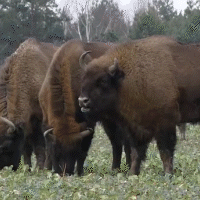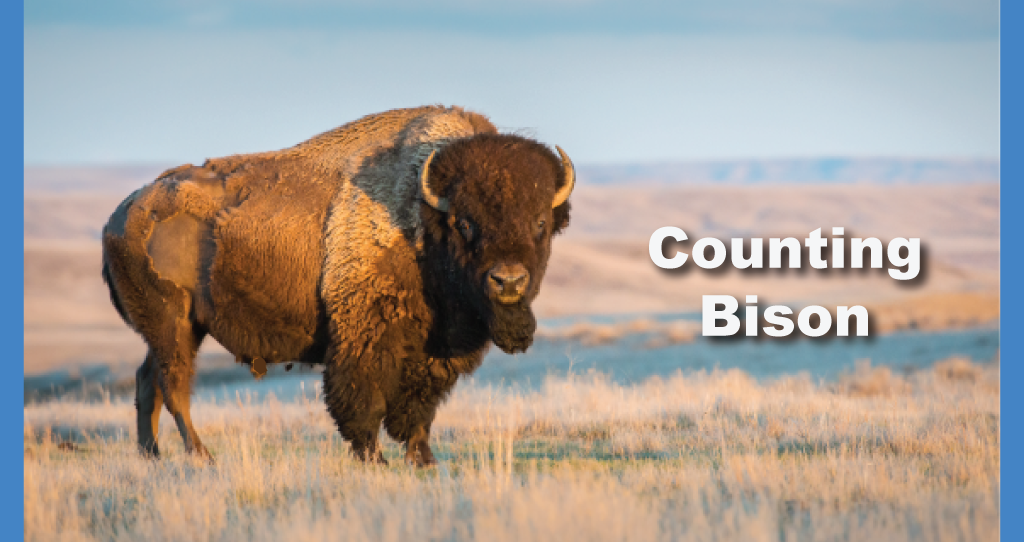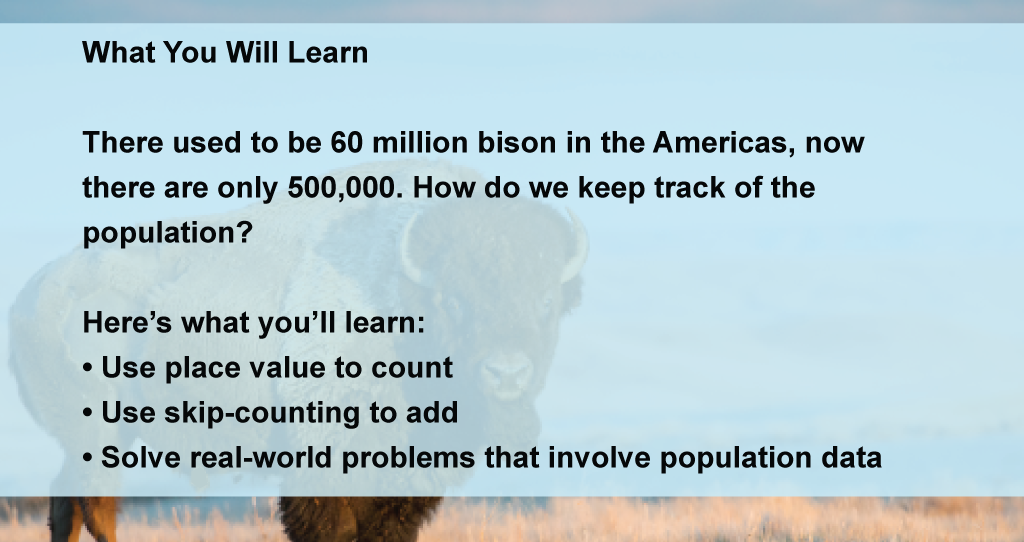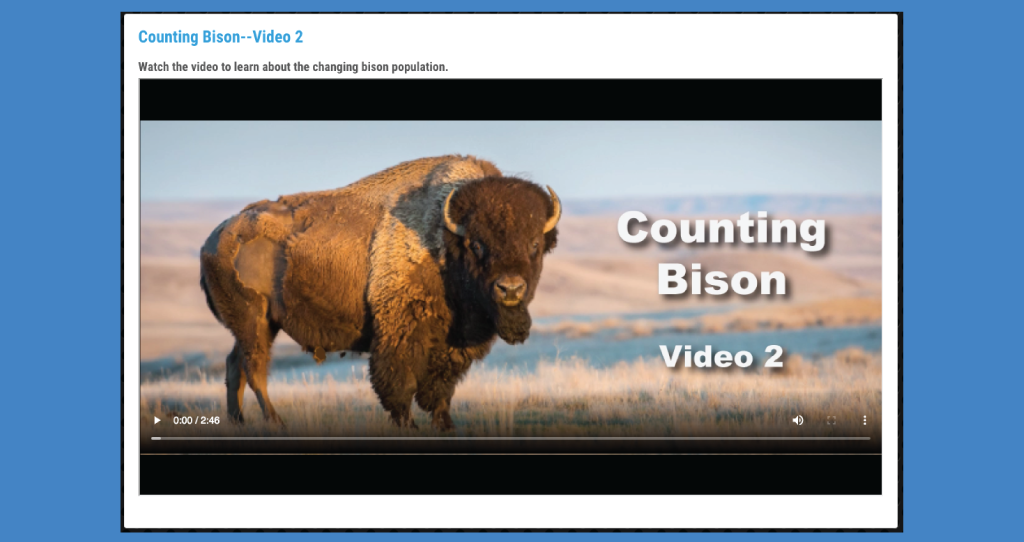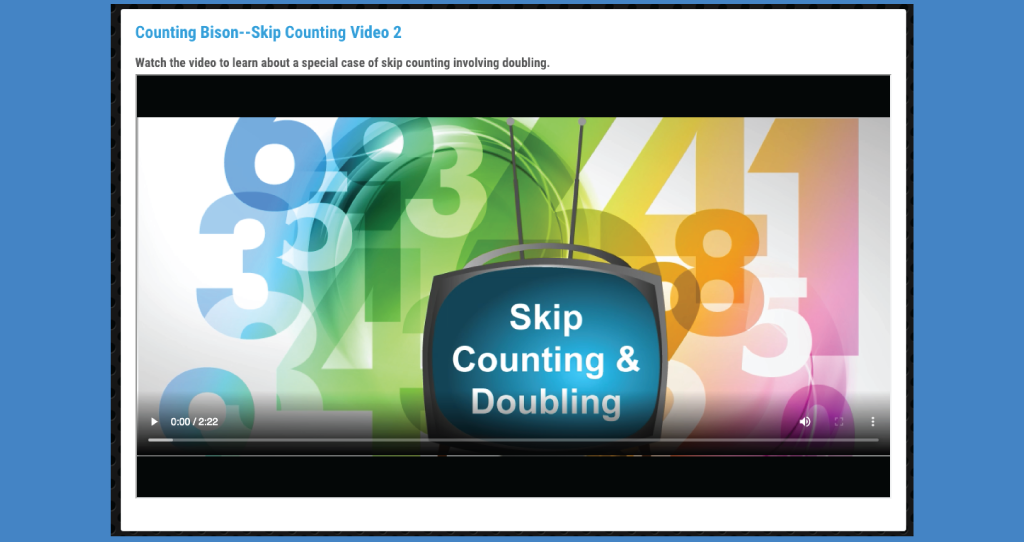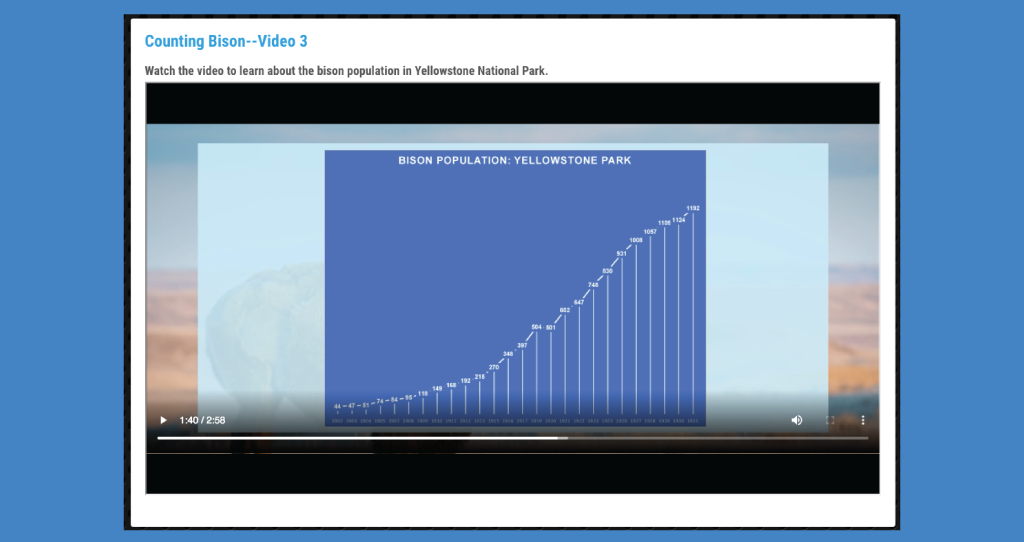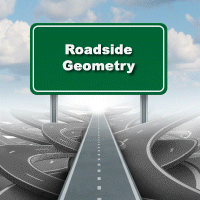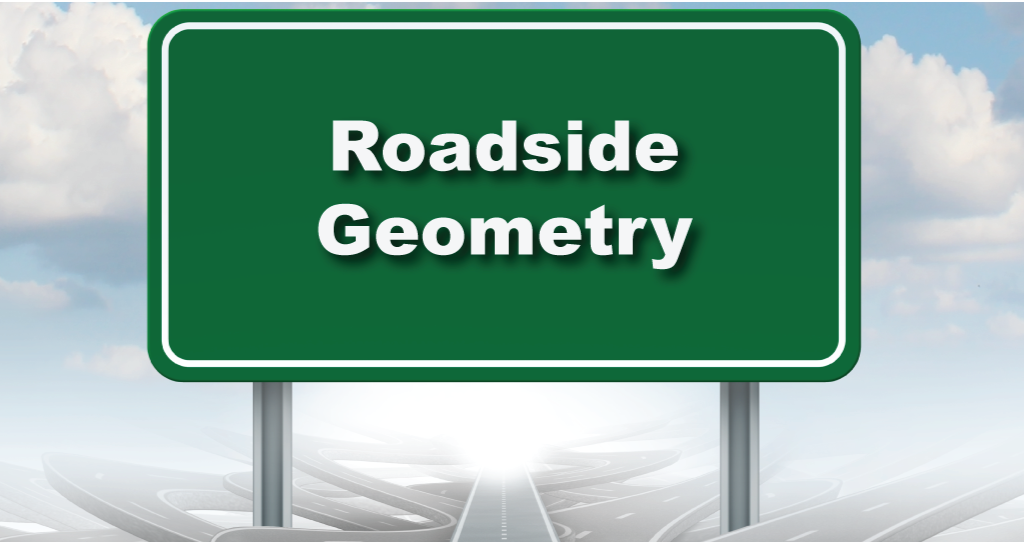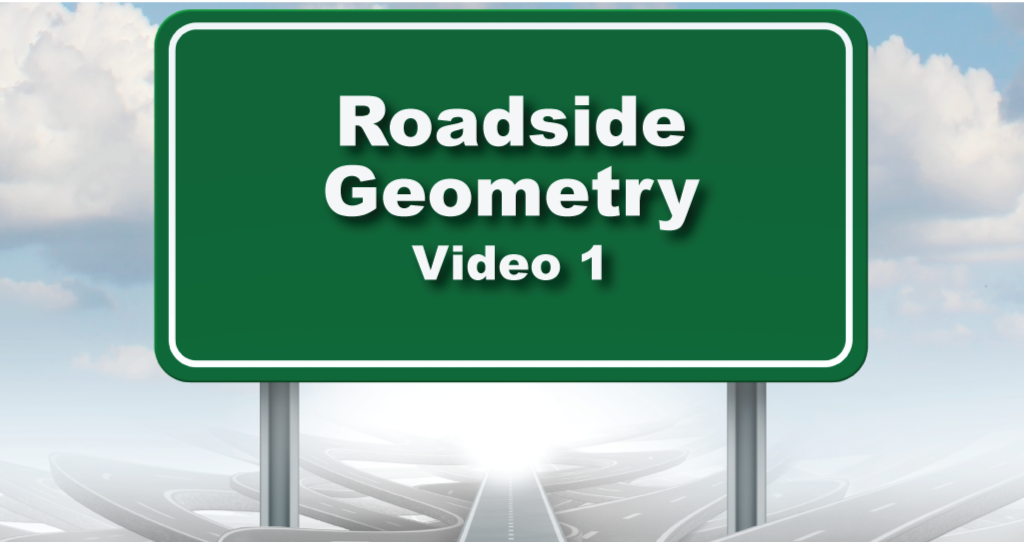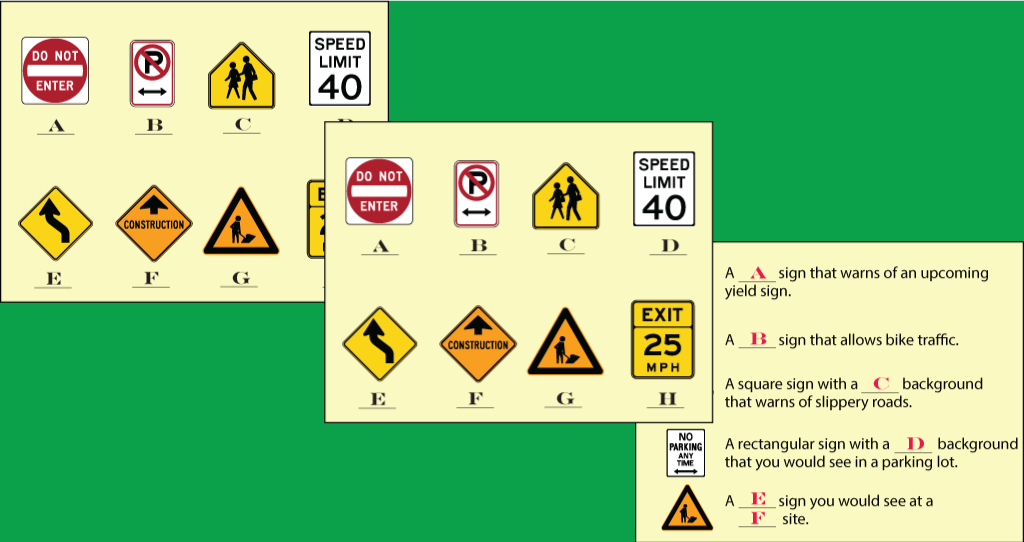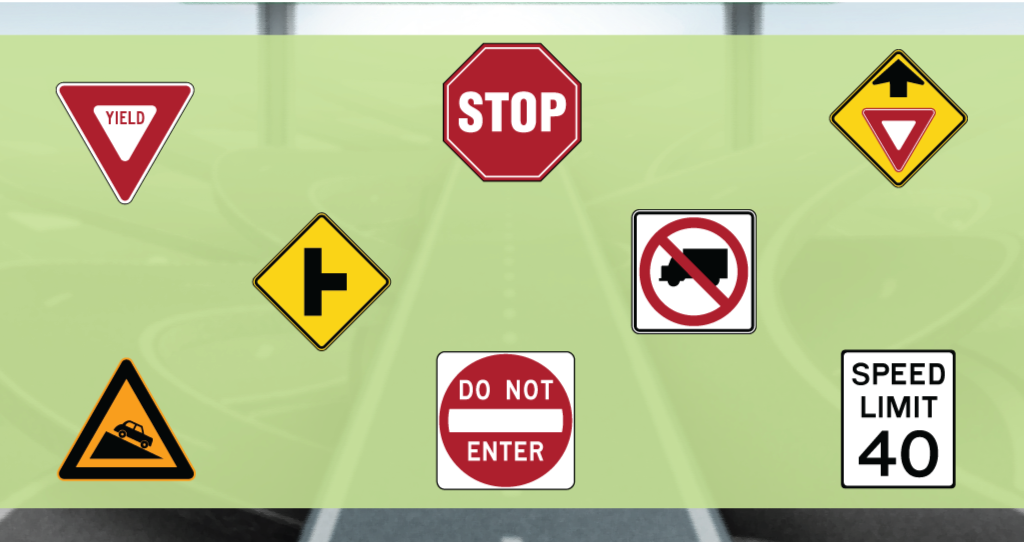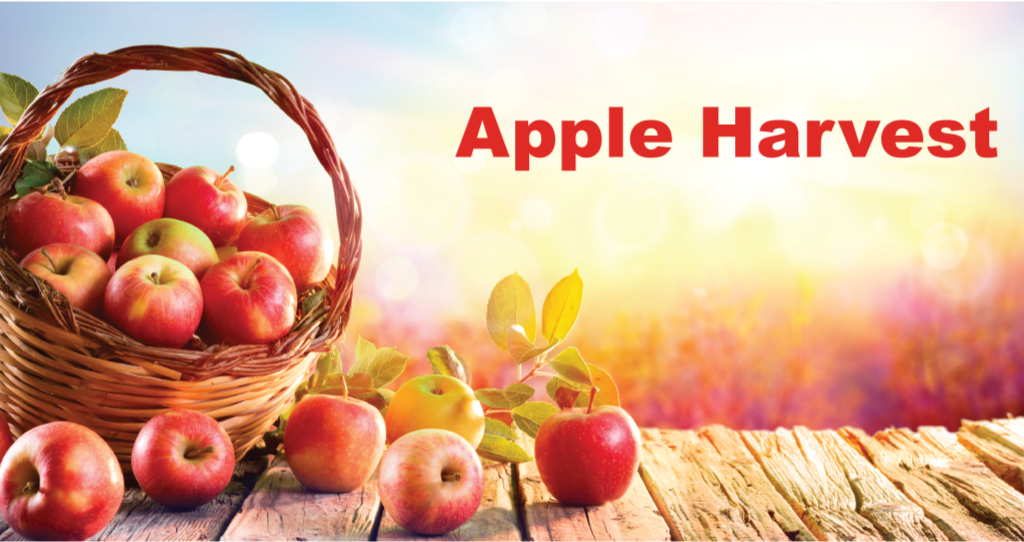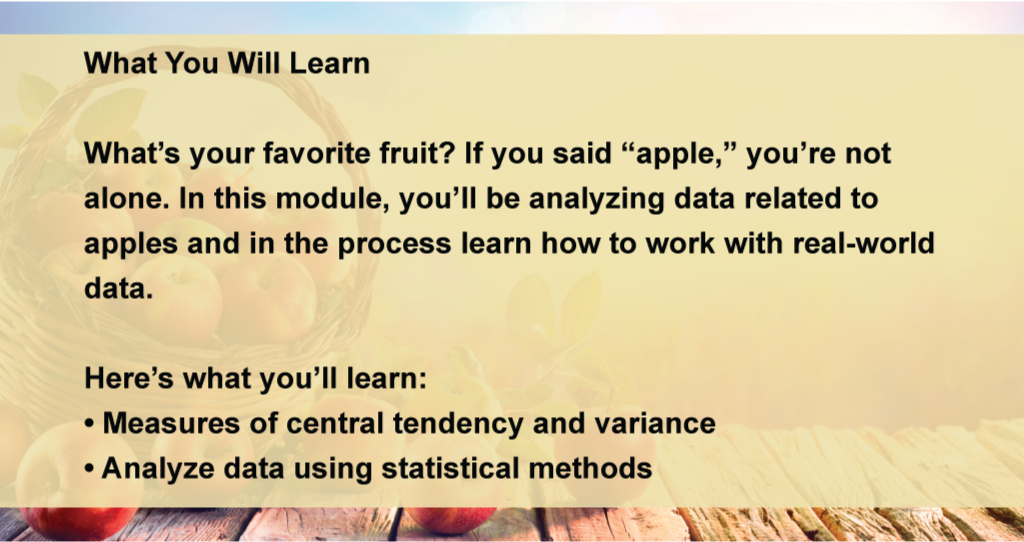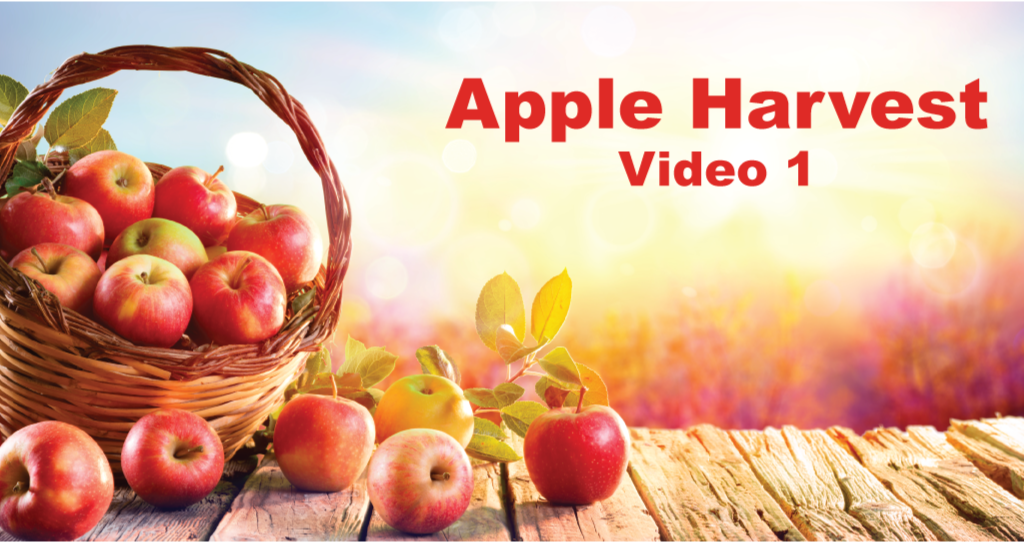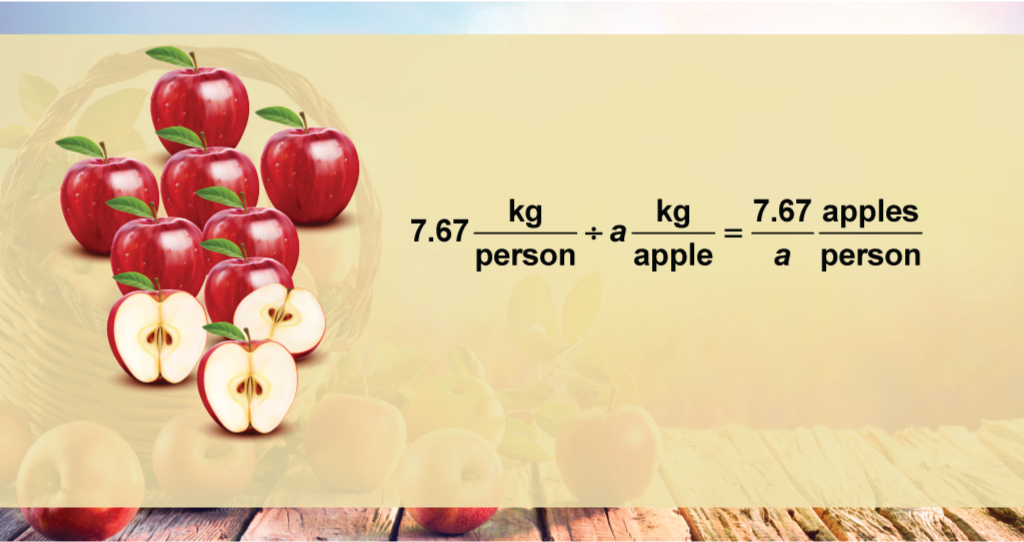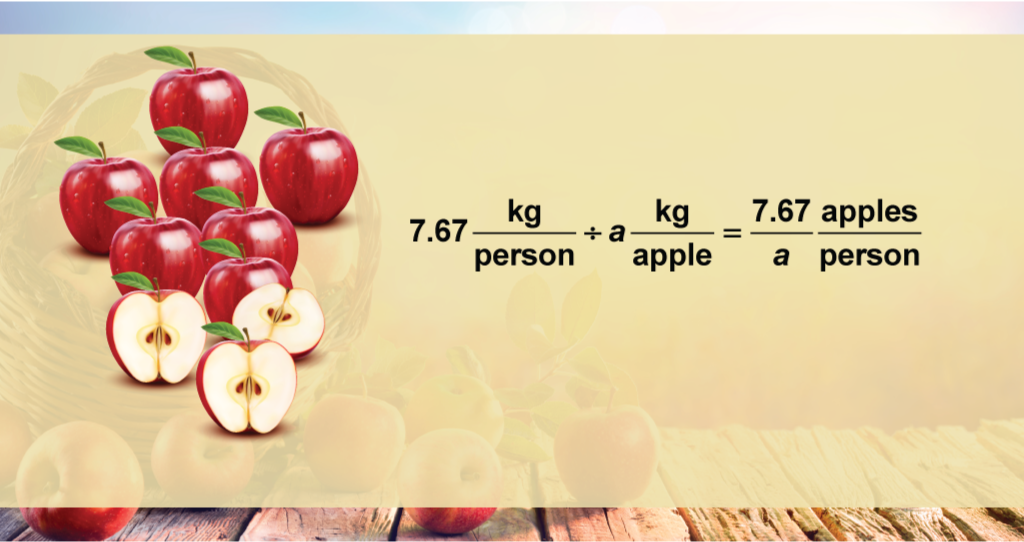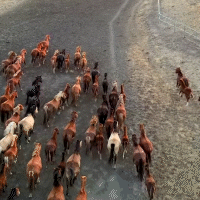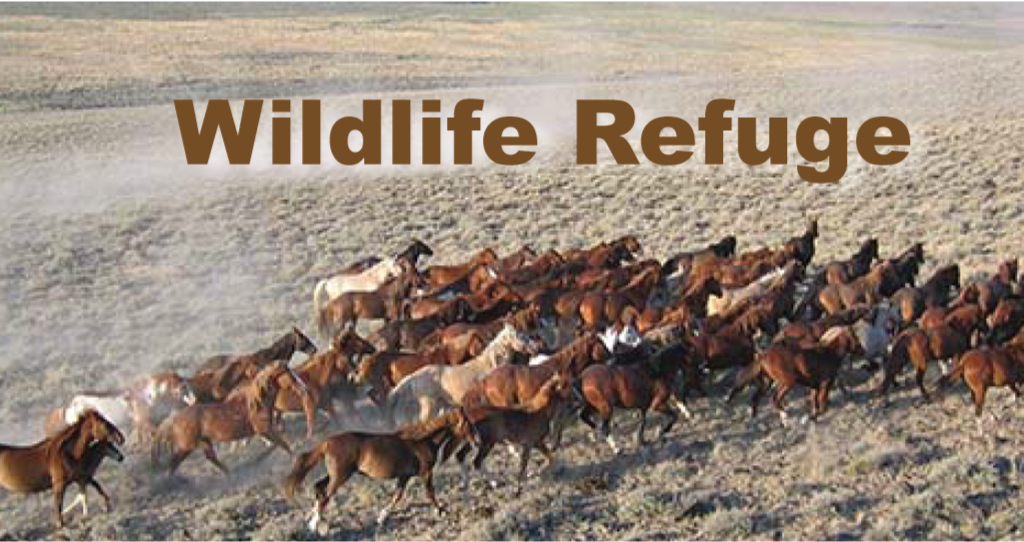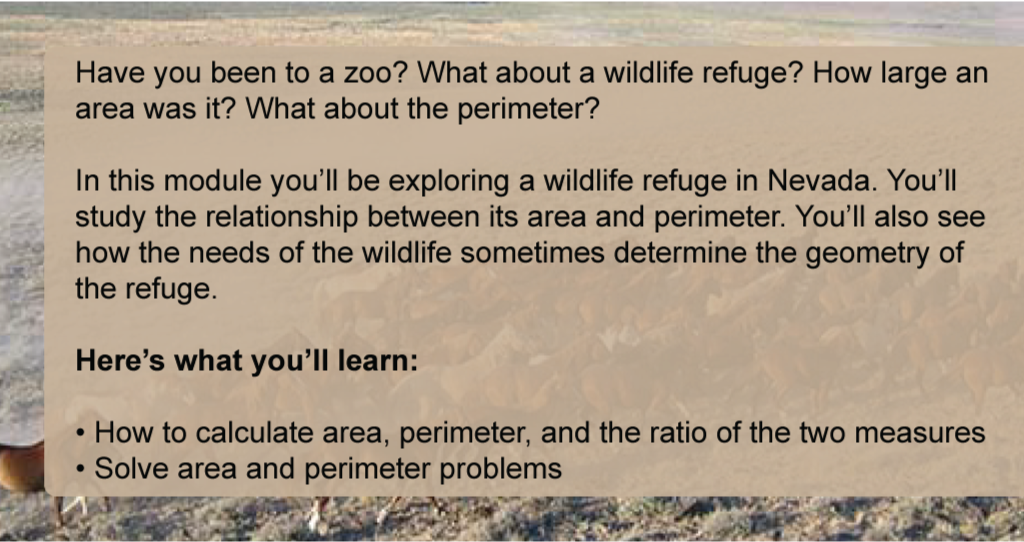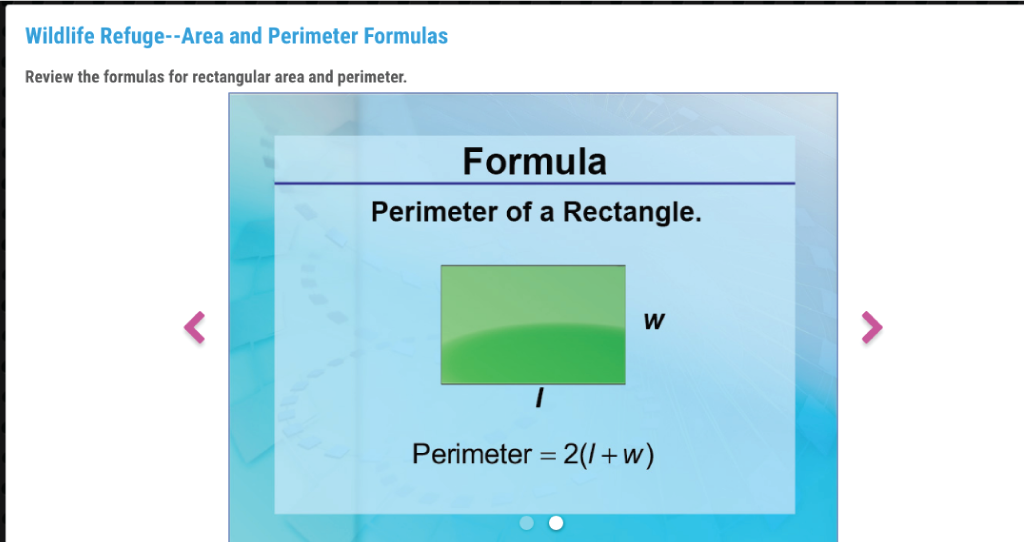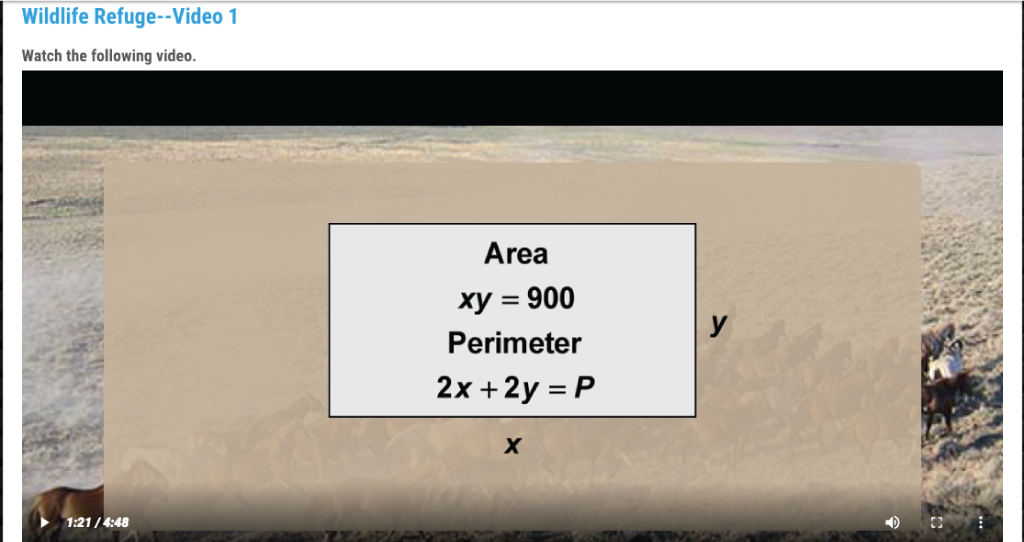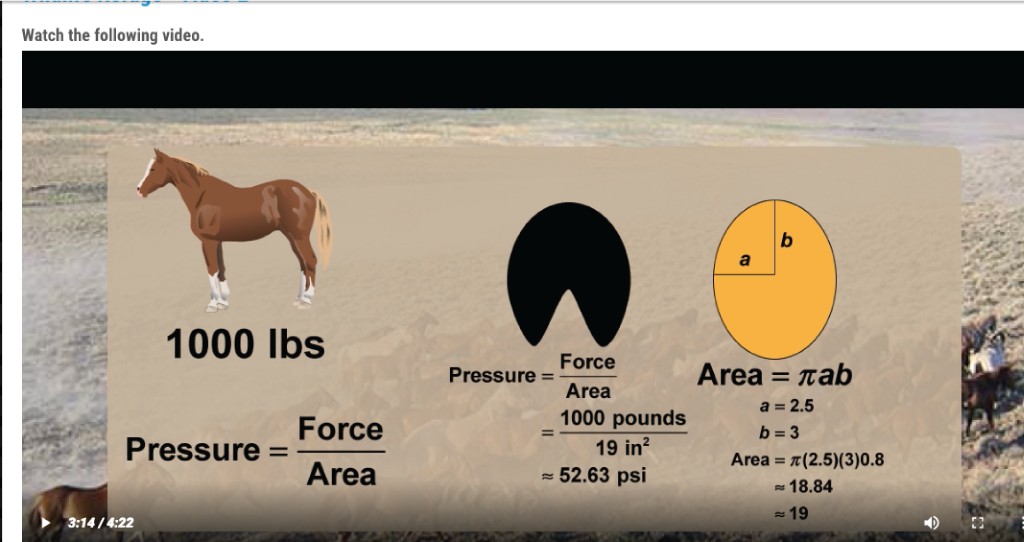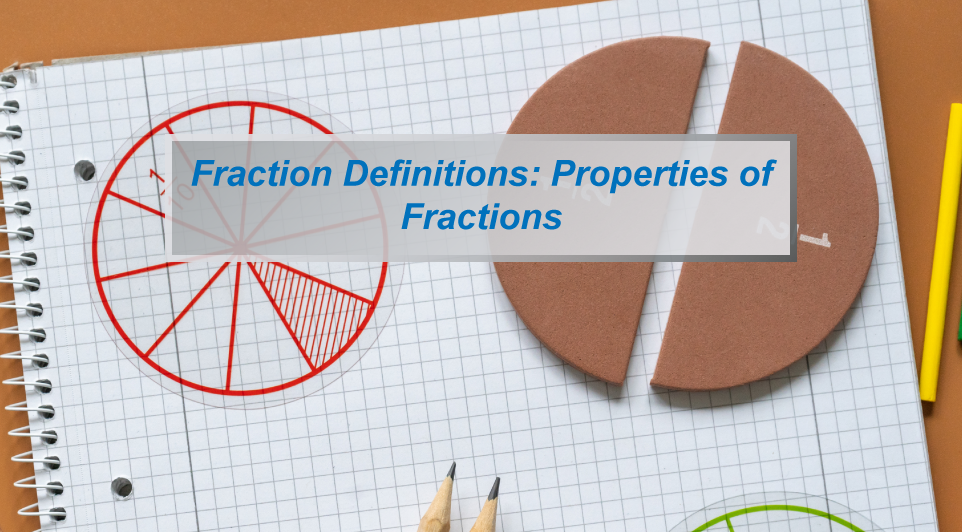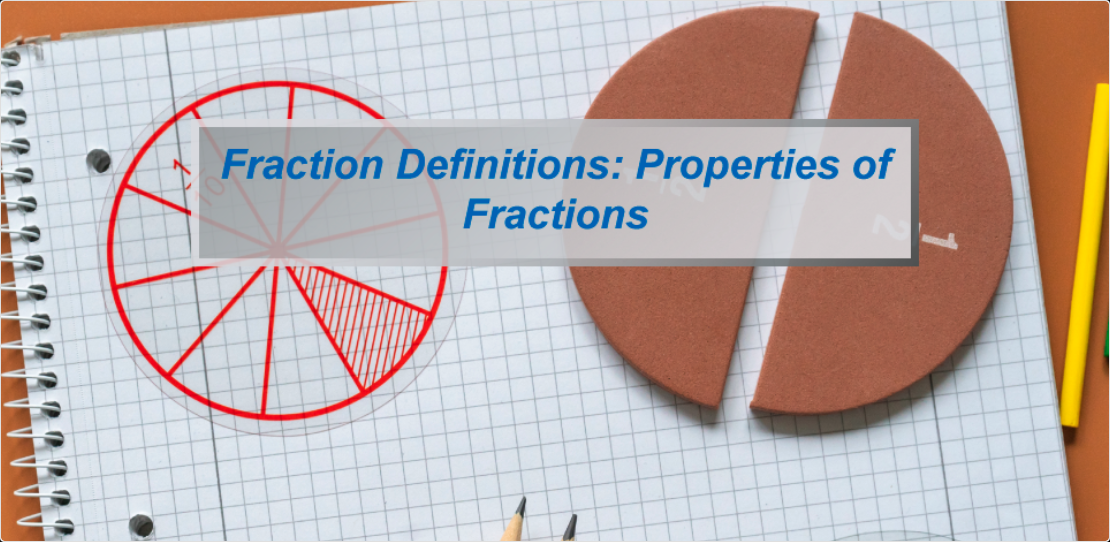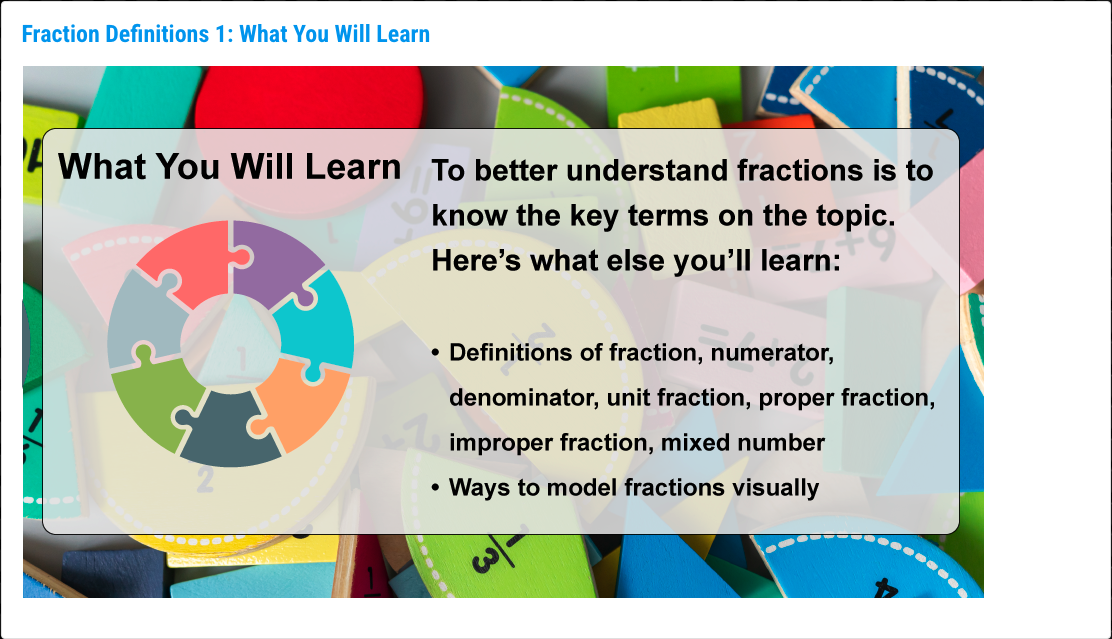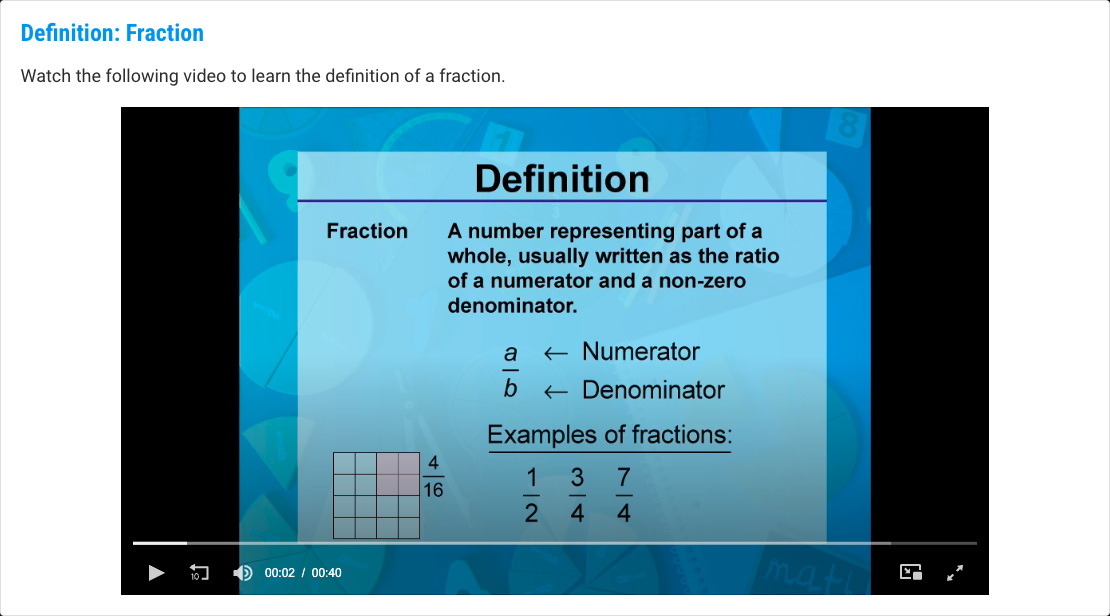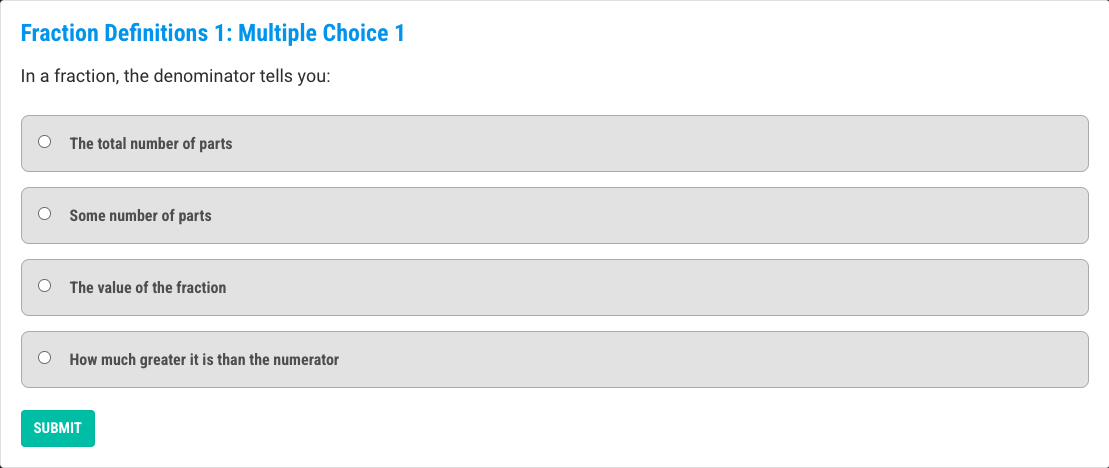Counting Bison
Description
In this application of arithmetic concepts, students analyze the changing population of bison in the Americas. Using real-world data and applying key math concepts, students will do some sophisticated analysis using basic skills.
These are the key math concepts covered:
- Place value
- Skip counting
- Doubling
- Data analysis
Given the wide disparity in the population of bison over several centuries, students will be analyzing data in the millions but using place value to gain a clear understanding of the numbers involved. Skip counting will be used to analyze changes to populations, including patterns than involve doubling.
Students will be actively engaged with the subject matter and will develop a mathematical mindset around data. This is an excellent preparation for the data analysis developed in upper elementary and middle school.
Math Concepts
- Graphing Numbers
- Number Concepts
Learning Objectives
- Use place value tables to analyze numbers
- Use skip counting to generate number patterns
- Generate number patterns that involve doubling
Prerequisite Skills
- Understands the basics of place value
- Understands the basics of skip counting
- Familiar with data displayed in chart or graph
| Common Core Standards | CCSS.MATH.CONTENT.2.NBT.B.7, CCSS.MATH.CONTENT.4.OA.C.5 |
|---|---|
| Lesson Duration | 45 mins |
| Grade Range | 2nd - 4th Grade |
